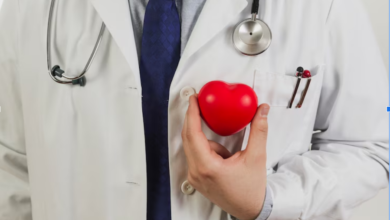Guardians of Health: Maintaining Safety in Drug Manufacturing

In the intricate world of drug manufacturing, safety is not just a regulatory requirement—it is a moral obligation. Every tablet, vial, or capsule produced in a pharmaceutical facility is destined to impact human health. As guardians of this vital process, pharmaceutical professionals must uphold the highest standards of safety at every stage. Ensuring safety in drug manufacturing protects not only patients but also workers, the environment, and the credibility of the industry.
The Critical Role of Safety in Pharma
Drug manufacturing involves a complex blend of chemistry, biology, engineering, and logistics. From the handling of potent active pharmaceutical ingredients (APIs) to sterile filling lines and packaging operations, the potential risks are significant. Without robust safety protocols, these risks can translate into contamination, equipment failure, worker injury, or worse—harm to end users.
Safety in pharmaceutical production is twofold: product safety and workplace safety. The former ensures that drugs are pure, potent, and contamination-free. The latter focuses on protecting employees from occupational hazards such as chemical exposure, machinery accidents, and repetitive stress injuries.
Core Elements of Drug Manufacturing Safety
1. Good Manufacturing Practices (GMP)
Good Manufacturing Practices (GMP) are the backbone of pharmaceutical safety. These FDA-enforced regulations cover every aspect of manufacturing—from sanitation and equipment validation to documentation and employee training. GMP ensures that drugs are consistently produced and controlled according to quality standards.
Strict adherence to GMP helps prevent cross-contamination, dosage inaccuracies, and other defects that could compromise drug efficacy or patient safety. Routine audits and inspections reinforce compliance and uncover areas for improvement.
2. Cleanroom Protocols and Environmental Controls
Maintaining a sterile environment is crucial, especially when producing injectable or inhalable pharmaceuticals. Cleanrooms—classified according to ISO standards such as ISO 14644—are rigorously controlled environments where factors like air quality, temperature, and humidity are continuously monitored and managed to minimize microbial and particulate contamination. To comply with these standards, personnel must adhere to stringent gowning protocols, including the use of gloves, face masks, full-body coveralls, and shoe covers.
High-efficiency particulate air (HEPA) filtration, routine surface disinfection, and ongoing environmental monitoring are essential practices to ensure cleanrooms consistently meet ISO compliance and maintain the highest levels of product safety..
3. Chemical and Biological Hazard Management
Handling hazardous chemicals or biological agents requires specialized training and protective measures. Material Safety Data Sheets (MSDS) provide information on proper storage, handling, and emergency procedures. Fume hoods, biosafety cabinets, and proper waste disposal protocols reduce exposure risks.
In addition, facilities often implement hazard communication programs (HazCom) to educate employees about the risks associated with chemicals in the workplace.
4. Equipment Safety and Maintenance
Pharmaceutical manufacturing relies heavily on automated systems and high-precision machinery. Equipment must be routinely maintained, calibrated, and validated to ensure proper function. Malfunctioning equipment not only risks product integrity but also poses injury risks to workers.
Lockout/tagout procedures are vital when performing maintenance to prevent accidental machine startup. Proper training ensures that only qualified personnel operate specialized machinery.
5. Employee Training and Safety Culture
People are at the heart of every pharmaceutical operation. Regular training programs keep staff up to date with safety protocols, emergency procedures, and changes in regulations. Beyond technical skills, cultivating a safety-first mindset empowers employees to report hazards, follow procedures diligently, and intervene when they see unsafe practices.
Open communication, leadership commitment, and incident review processes contribute to a culture of continuous safety improvement.
See also: Scientific Insights into Air Quality and Public Health
Emerging Technologies Enhancing Safety
Advancements in automation, robotics, and digital monitoring are helping to elevate safety in drug manufacturing. Robotic systems can handle toxic or delicate substances with precision, reducing human exposure. Internet of Things (IoT) sensors and AI-powered predictive maintenance can detect early signs of equipment failure, allowing preemptive action before accidents occur.
Digital batch records and real-time data tracking improve transparency and accountability across the manufacturing process, helping teams respond quickly to deviations or contamination threats.
Final Thoughts: A Shared Responsibility
Maintaining safety in drug manufacturing is not the job of one department—it is a shared responsibility spanning all levels, from executives to operators. Every precaution taken today safeguards not only the worker on the production floor but also the patient who depends on that medication tomorrow.
The pharmaceutical industry holds a unique position as both a driver of innovation and a steward of public health. In this dual role, safety must always come first. By embracing best practices, investing in technology, and fostering a strong safety culture, drug manufacturers can continue their mission as true guardians of health.





